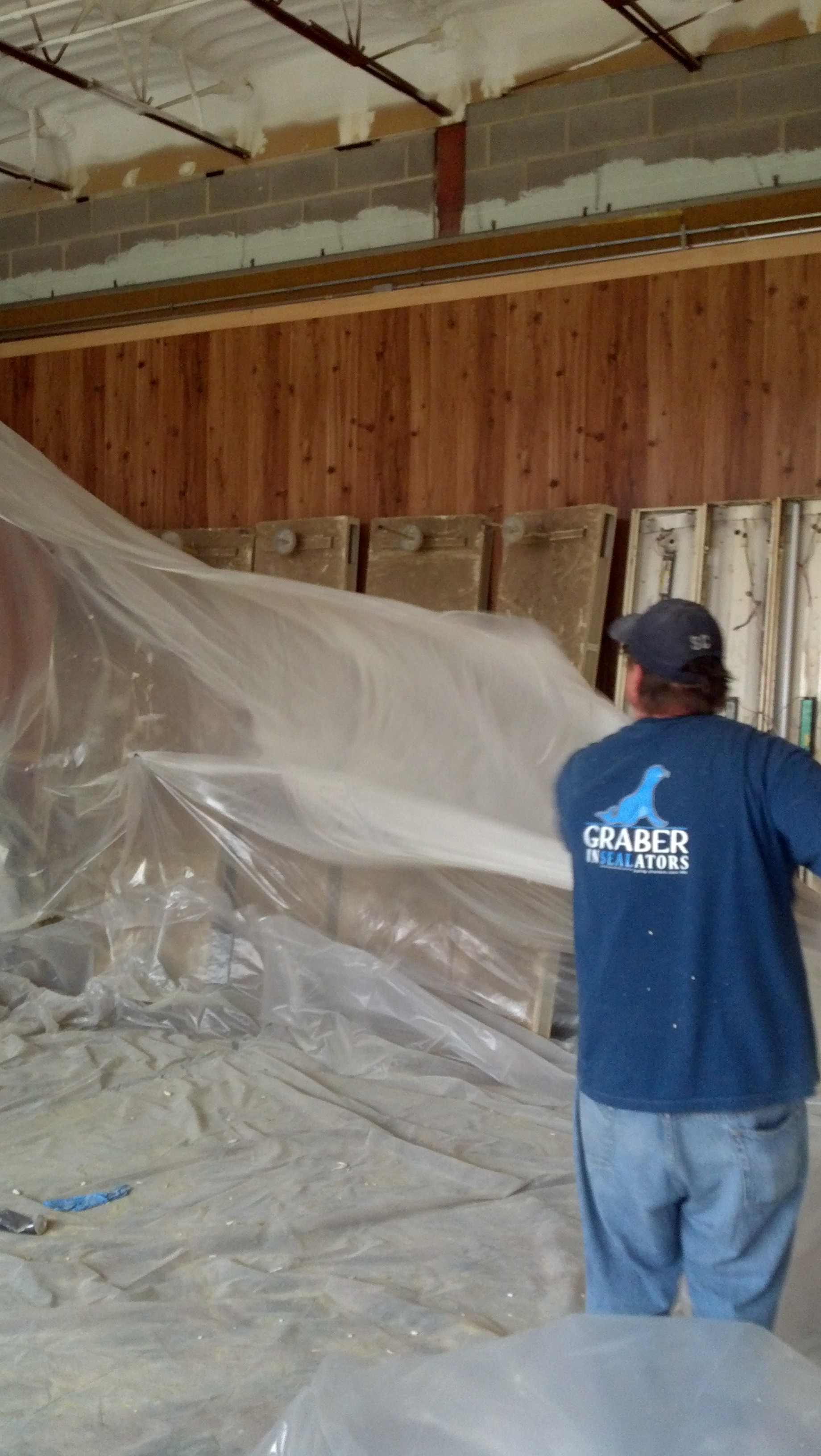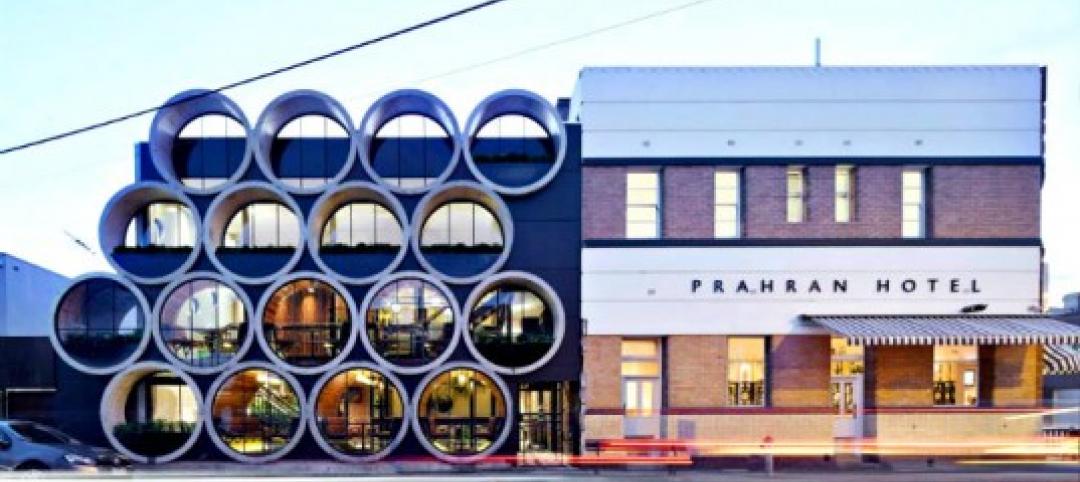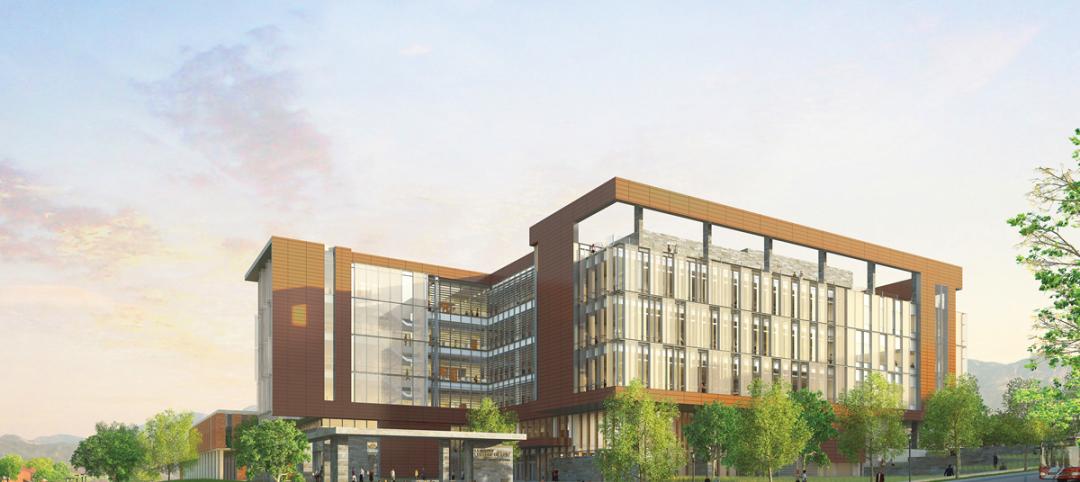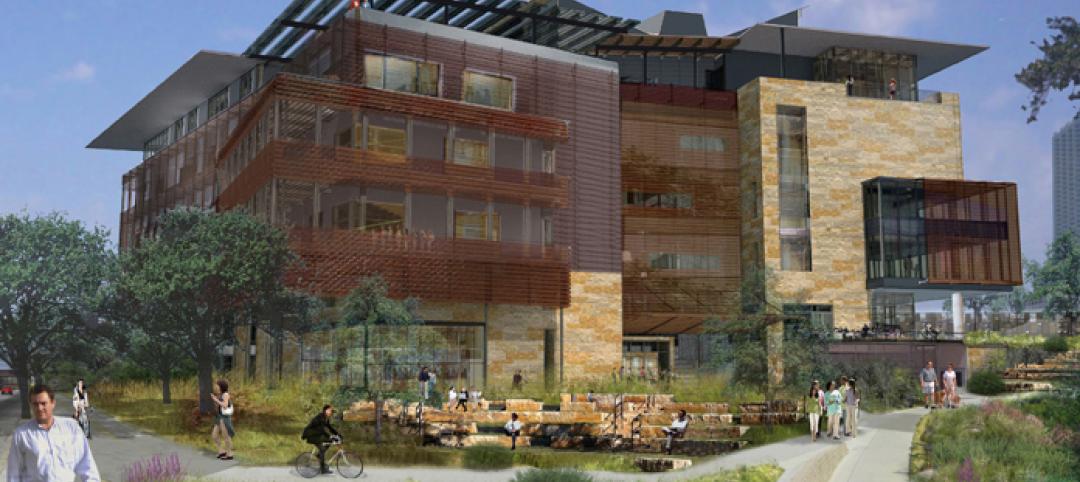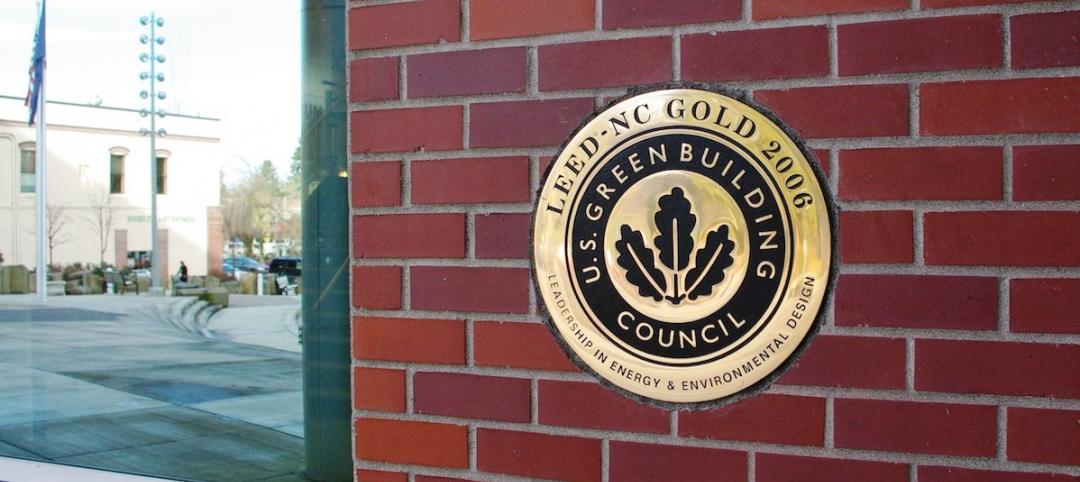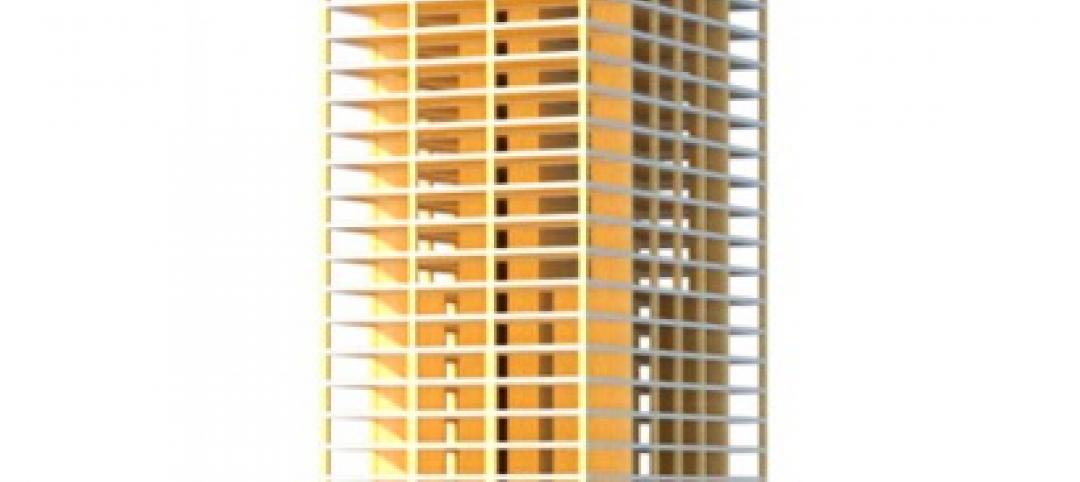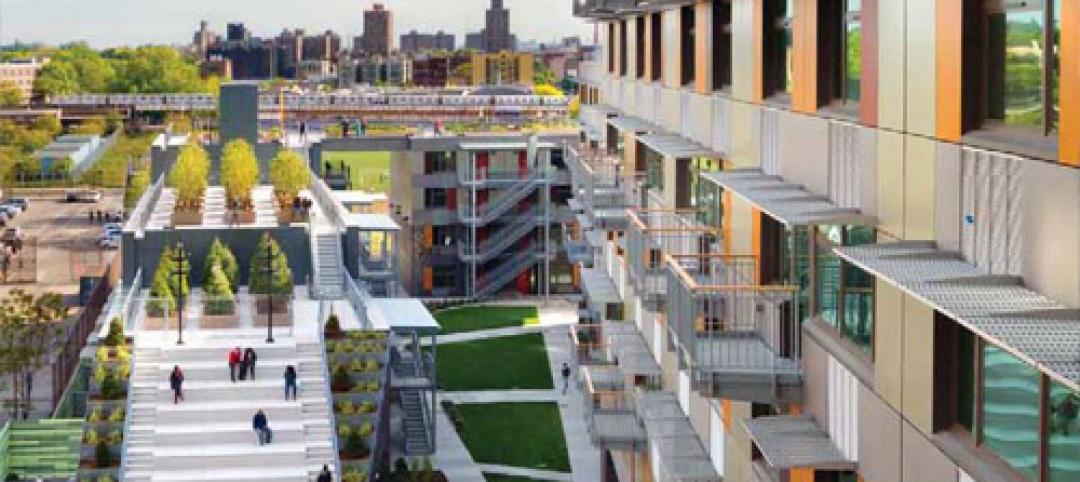Located near Louisville, Ky., Fort Knox is home to the U.S. Army’s Armor Center, Armor School, Recruiting Command, and numerous other facilities. The post has a daytime population of more than 30,000 people and more than 3,000 family housing units. In total, Fort Knox encompasses 11 million square feet of conditioned space across more than 109,000 acres.
A military post of this size consumes a significant amount of energy. Fort Knox is acutely aware of the need for sustainability to ensure continuous operations and meet Federal energy goals and requirements. The post’s Disney Barracks complex demonstrates sustainability in action by using ground coupled heat pumps to move thermal energy from the earth or buildings to provide space heating and cooling.
Facility overview
The Fort Knox Disney Barracks complex is named for Major General Paul Disney, a World War II veteran and first commander of the Armor Training Center at Fort Knox. The complex consists of 38 facilities, including 14 barracks, six dining facilities, six classrooms, battalion headquarters, a chapel, movie theater, and several other facilities. These buildings make up approximately 811,400 total square feet of conditioned space.
At the time of construction in the 1960s, energy efficiency was not a priority. The entire Disney complex was heated from a centralized, high-pressure, high-temperature hot water system. The design, age, and operation of the central heating plant rendered it inefficient and outdated compared to today’s standards. Cooling was equally inefficient. The Disney buildings were cooled from a mixture of decentralized cooling equipment of different ages, efficiencies, and functional conditions.
None of the buildings used automated temperature control systems. In addition, the underground hot water distribution system had many thermal leaks due to age. Only four of the barrack facilities had ventilation equipment, none of which functioned. As a result, windows were always left open for ventilation, which caused discomfort, poor indoor air quality, and mold issues from uncontrolled temperature and humidity.
Equipment failures added to the Disney Barracks complex central heating pitfalls, the most recent of which was a failure associated with the underground piping. Fort Knox received $2 million to repair and replace a portion of the underground hot water distribution system, but opted to use that funding to fix the bigger problem instead of fixing one failing component after another in an outdated, inefficient system.
Fort Knox’s energy consumption analysis of all Disney Barracks complex facilities revealed that the inefficient heating and cooling systems consumed 39% more energy than required. The post decided to replace these systems and converted the Disney Barracks complex in less than six months with geothermal heating and cooling. Use of a utility energy service contract (UESC) dramatically shortened the construction cycle of the energy project and allowed for an operational facility in a fraction of the time the traditional procurement methods required.
Project at a Glance
Federal facility: U.S. Army Fort Knox Disney Barracks
Conditioned square feet: 811,435 square feet across 38 facilities
System overview: Geothermal heat pumps with automated ventilation and control systems
Warranty: 50 years for ground piping system; 25 years for inside components
Annual energy savings: 106,600 MMBtu
Utility partner: Nolin Rural Electric Cooperative Corp.
Year of completion: 2005
Total cost: $10.4 million
Annual energy cost savings: $906,100
Payback: 11 years
System overview
Fort Knox replaced approximately 70% of the existing Disney Barracks heating, ventilation, and air conditioning (HVAC) systems with geothermal heat pumps (GHPs), taking advantage of renewable energy resources. The vertical closed loop GHPs consist of 180 boreholes drilled 500 feet deep, each of which is interconnected. The post also added automated ventilation controls with dedicated fresh air systems and a wireless control system. These systems improve barrack air quality.
Geothermal Technology Overview
Geothermal heat pumps (GHP) move heat from one place to another to provide space heating and cooling throughout the year. In the summer, a GHP transfers heat from inside the facility to the ground outside or below. In the winter, a GHP extracts heat from the ground and transfers it inside the conditioned space.
A GHP system has three major components: the ground loop (buried piping system), the heat pump itself, and the heating and cooling distribution system. Two main types of GHPs exist. Closed-loop systems use sealed horizontal or vertical pipes as heat exchangers through which the heat conductive fluid transfers heat to or from the ground. Open-loop systems pump water to the heat exchanger and then back to the source.
More than 60% of total Fort Knox facility square footage, or more than six million square feet, is served by automated geothermal heating and cooling. Additional ground coupled heat pumps are installed in privatized housing. A central, automated control system pulls all facilities into one, easy-to-use system that serves as the backbone of a post-wide energy management program. More than 140 post facilities are tied into the system with plans to add more in the near future.
Results summary
The renewable energy ground coupled heat pumps at Disney Barracks reduced Fort Knox’s annual energy consumption by approximately 106,600 million British thermal units (MMBtu) in 2006. This is a 10% reduction in natural gas consumption. Electricity use overall changed little from this project.
The Disney Barracks’ GHP system helped Fort Knox and the U.S. Army save more than 102,000 thousand cubic feet (Mcf) of natural gas for a cost savings of $906,100 in 2005. The benefits, however, extend further. The indoor air quality of the Disney Barracks facilities greatly improved, directly benefiting occupant health and working conditions.
Project summary
Fort Knox strives each year to exceed reduction goals set by Federal regulations and requirements. Fort Knox reached this goal and maintained its reputation as a model Army post by effectively utilizing renewable energy and a variety of energy efficiency and management tools. Fort Knox improved quality of life for everyone on the post while reducing energy consumption and expenses. +
--
Resources: Federal Energy Management Program; Department of Energy (DOE) Geothermal Energy Technologies Program.
For more information contact:
Anne Sprunt Crawley Federal Energy Management Program 202-586-1505 anne.crawley@ee.doe.gov
Andy Walker National Renewable Energy Laboratory 303-384-7531 andy.walker@nrel.gov
Related Stories
| Jun 10, 2013
Lake Washington STEM school combines modular and site-built construction to meet ambitious schedule
When the Lake Washington School District outside Seattle needed a new high school built on an ambitious permitting and construction schedule of seven months, modular construction proved to be an ideal solution.
| Jun 7, 2013
Must see: Building façade made of massive concrete drain pipes
Looking to create a unique atmosphere using natural materials for the Prahran Hotel pub near Melbourne, local architect Techné Architects cleverly incorporated a series of concrete sewer pipes into the building's main façade.
| Jun 7, 2013
40 Under 40 retrospective: Where are they now?
Every month we’ll be catching up with past 40 Under 40 honorees to see what they’ve been up to since winning the award. This month we focus on a construction manager and a healthcare designer.
| Jun 7, 2013
First look: University of Utah's ‘teaching hospital for law’
The University of Utah broke ground on its cutting-edge College of Law building, which will facilitate new approaches to legal education based on more hands-on learning and skills training.
| Jun 7, 2013
First look: Austin breaks ground on 'light-filled' Central Library
The design scheme by Lake|Flato and Shepley Bulfinch incorporates reading "porches" and a light-filled, six-story atrium.
| Jun 5, 2013
Survey of AE firms shows profits, hiring on the rise
A recent survey of more than 40 Boston-area architecture and engineering companies by consulting firm DiCicco, Gulman & Company confirms continued growth in business volume.
| Jun 5, 2013
USGBC: Free LEED certification for projects in new markets
In an effort to accelerate sustainable development around the world, the U.S. Green Building Council is offering free LEED certification to the first projects to certify in the 112 countries where LEED has yet to take root.
| Jun 4, 2013
SOM research project examines viability of timber-framed skyscraper
In a report released today, Skidmore, Owings & Merrill discussed the results of the Timber Tower Research Project: an examination of whether a viable 400-ft, 42-story building could be created with timber framing. The structural type could reduce the carbon footprint of tall buildings by up to 75%.
| Jun 4, 2013
Notification reinvented: SimplexGrinnell introduces revolutionary family of intelligent notification appliances
Simplex TrueAlert ES uses addressable technology to improve protection, simplify installation and reduce operating costs.
| Jun 3, 2013
6 residential projects named 'best in housing design' by AIA
The Via Verde mixed-use development in Bronx, N.Y., and a student housing complex in Seattle are among the winners of AIA's 2013 Housing Awards.


